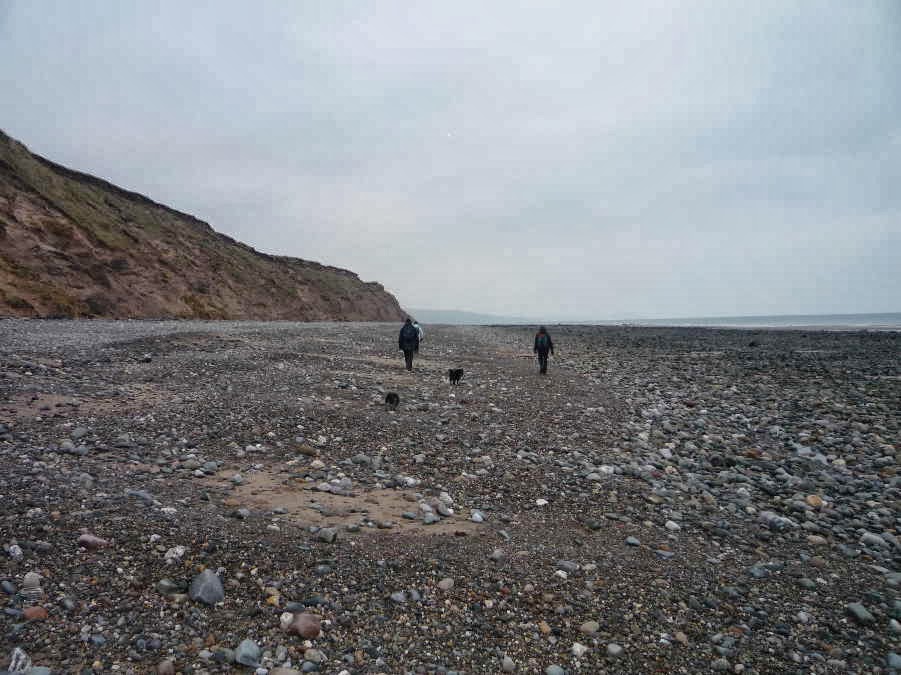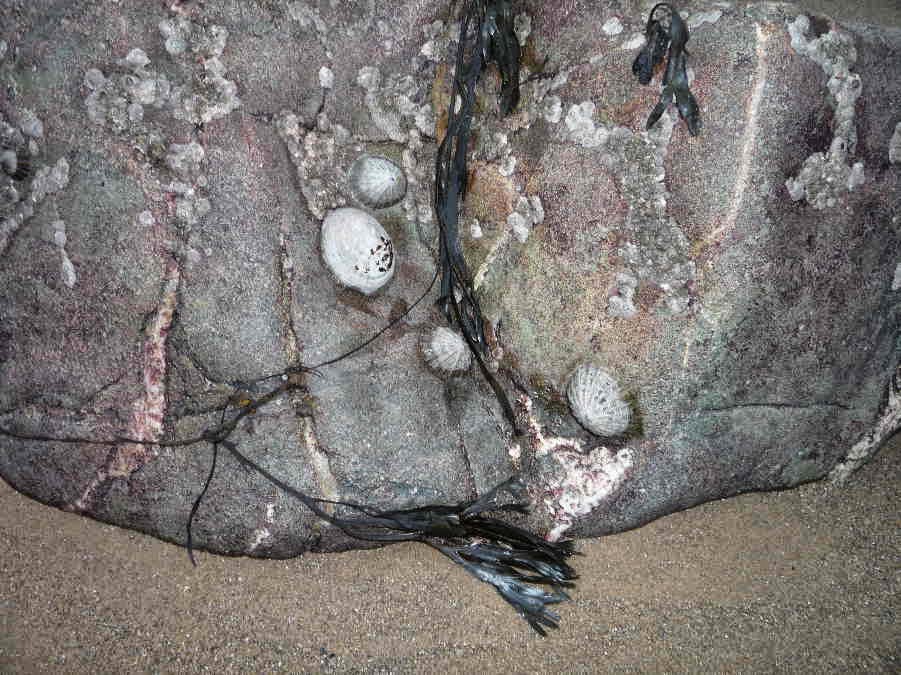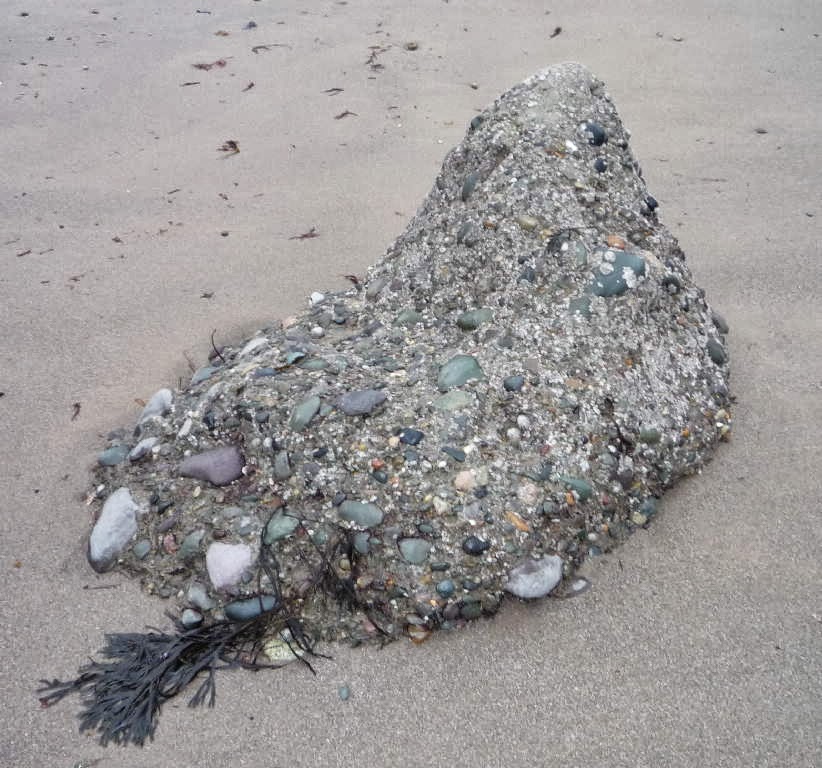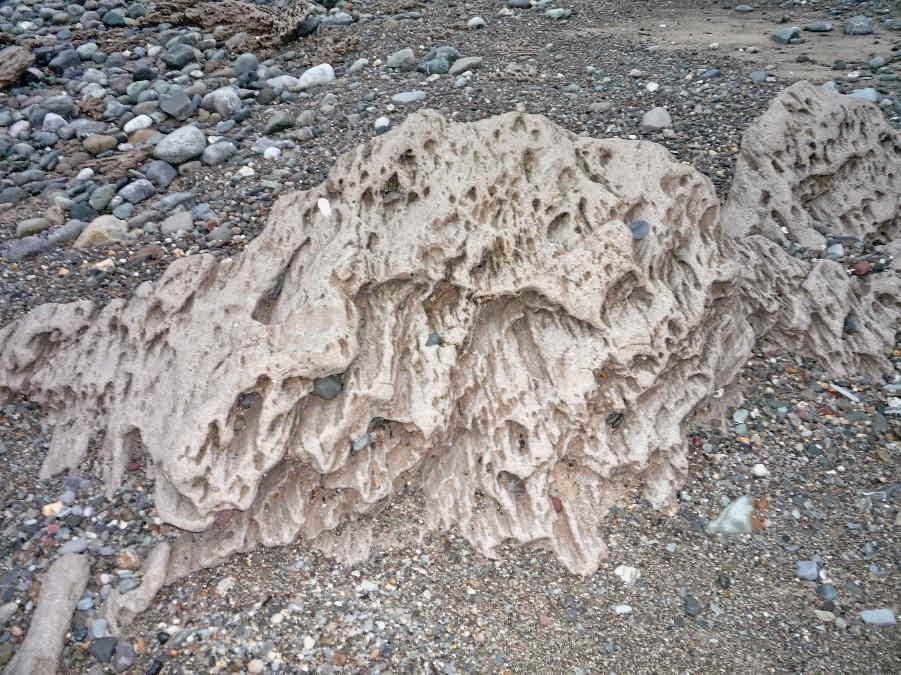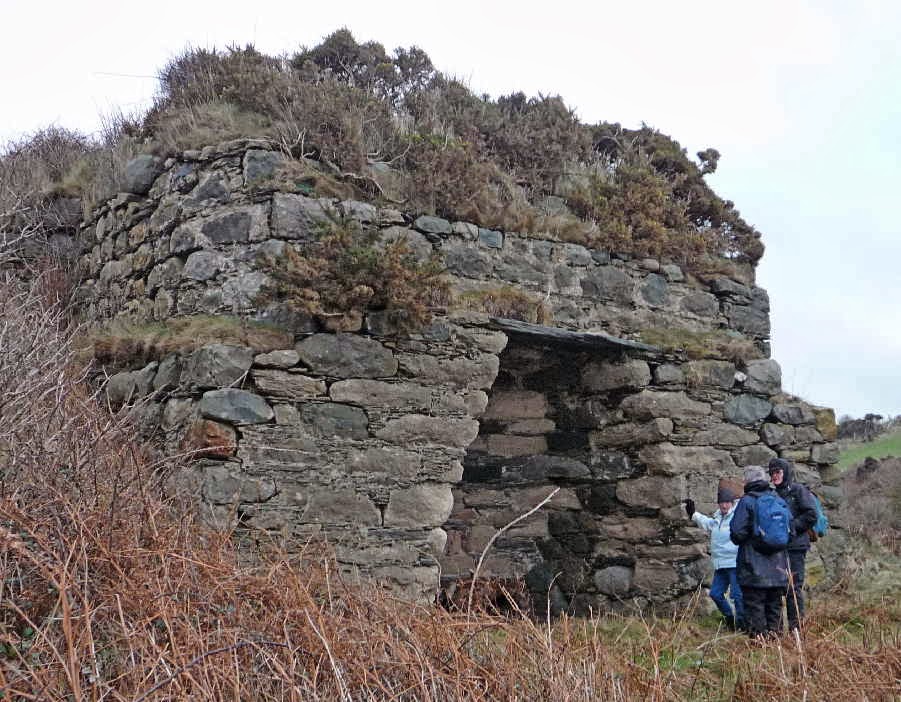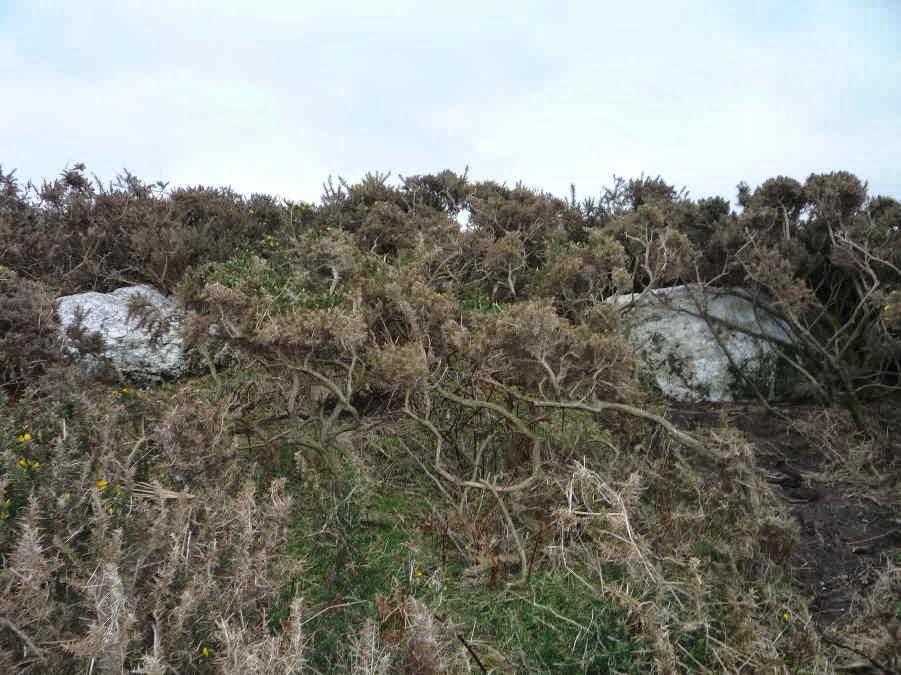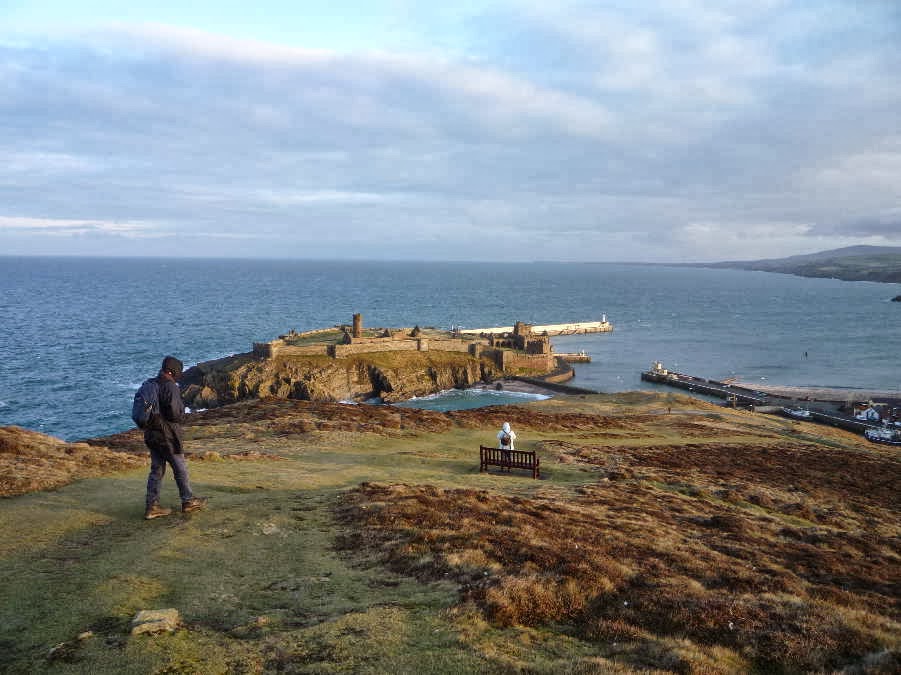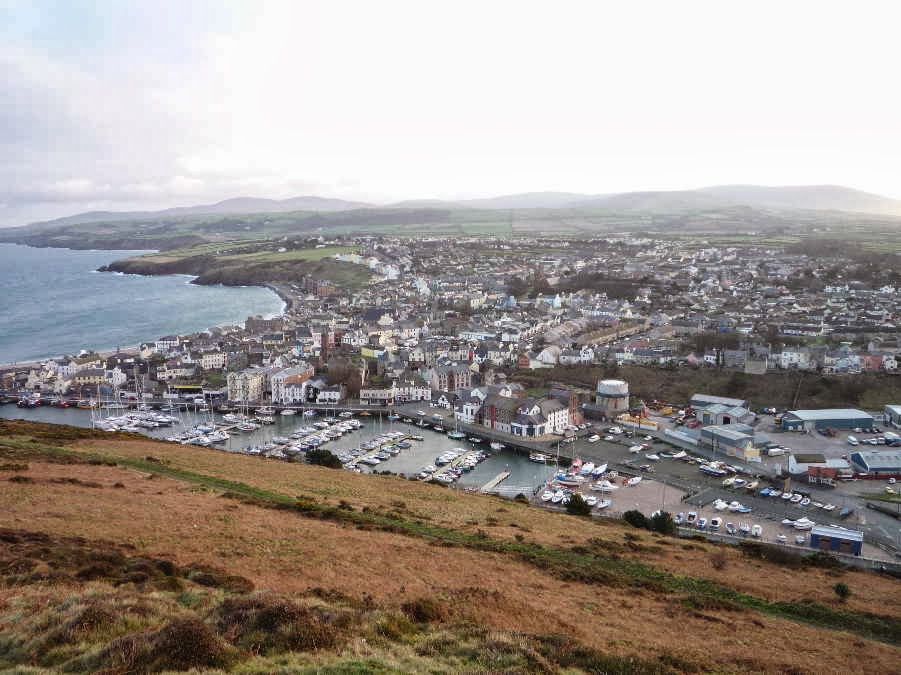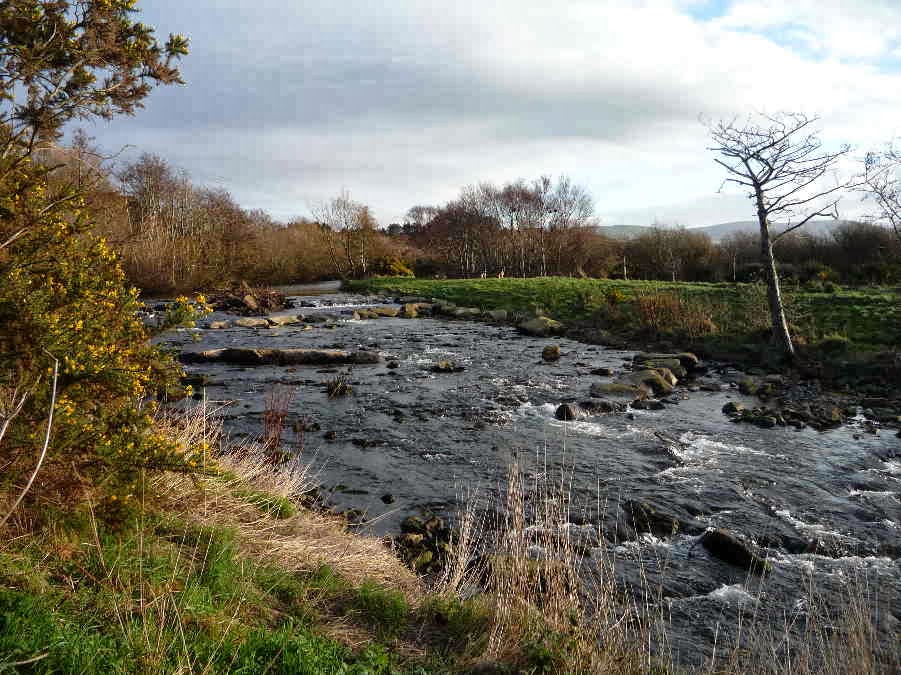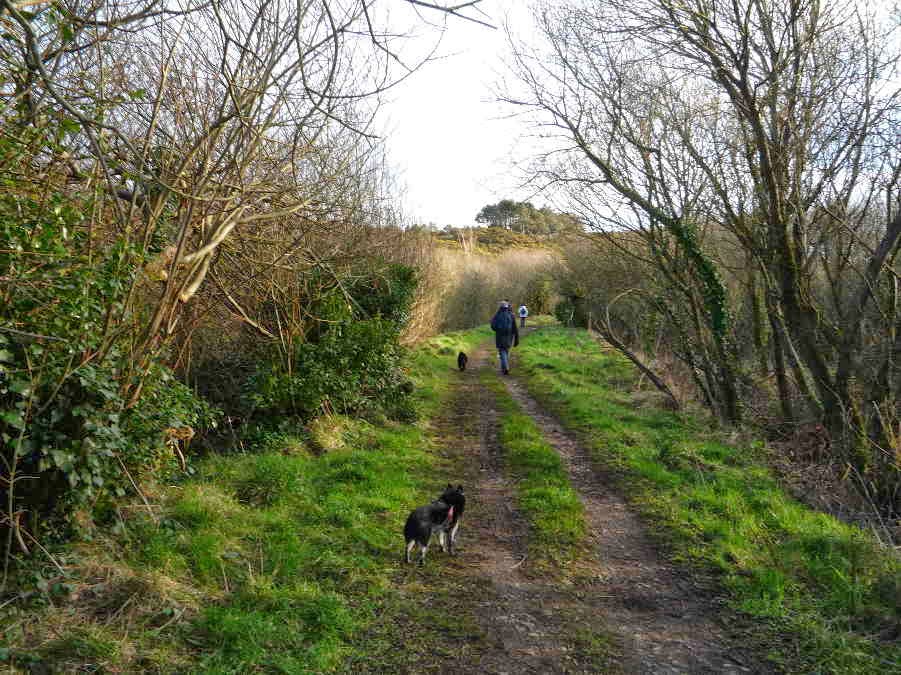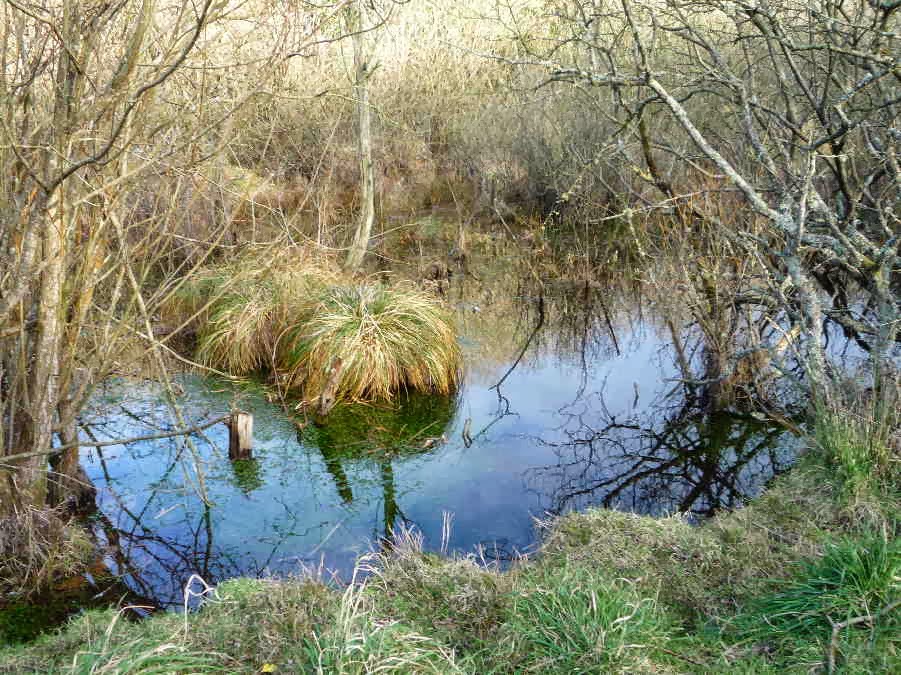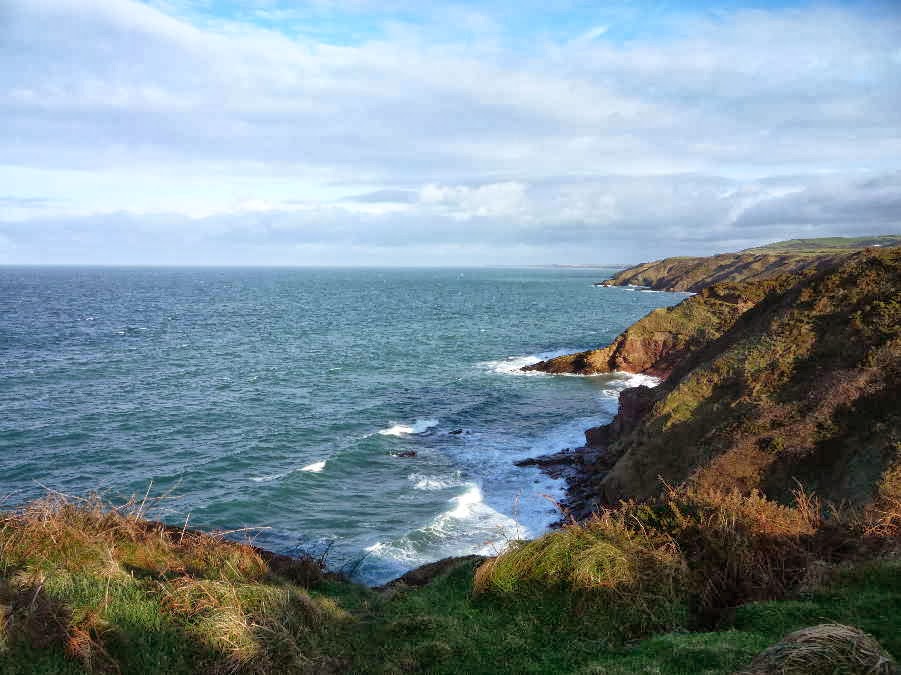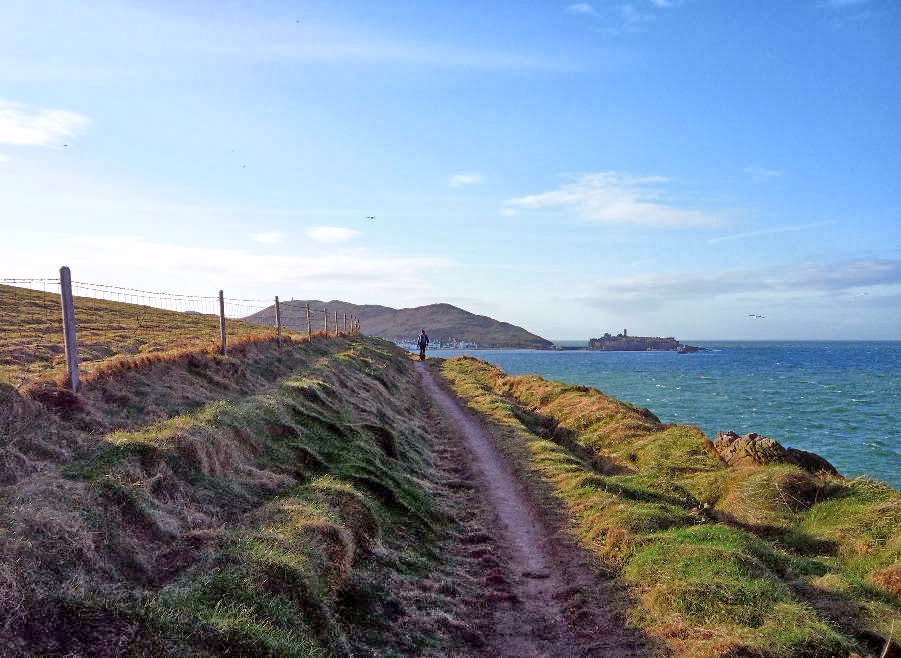A beach walk - The Cronk to Glen Trunk .
. . and back.
Tuesday 31st January
2012
This is a far less photogenic walk than the last
two, at Maughold and Peel. First along the beach on the west coast of the
Island and then returning to the cars along footpaths, the old railway line and
backroads. We chose it because of the cold weather, hoping to be sheltered from
the icy easterly winds. It was 3ºC when we left home.
We were surprised at the condition of the beach.
This is how it looked when we last walked south from The Cronk at the end of
June 2009.
And this is the scene, taken from the same place on Tuesday morning.
It was quite hard work, walking through the
pebbles and small boulders, and it wasn't made any easier by the fact that Alice
wanted to be carried most of the way. We thought she might be cold but once we
got off the beach she was quite happy again. She seems to have developed a
beach phobia!
Dorothy got very interested in taking arty shots
of some dark rocks which were exposed by the low tide and I amused myself taking
photographs of a few things that caught my eye.
First, the colours of the wet pebbles and
seaweed in a little rock pool . . .
Then a few shells on a rather pretty boulder.
There were very few traces of marine life on the shore - possibly because it
gets lashed by the westerly gales.
And then a couple of "rocks" that interested me
and caused me to waste hours on the internet on Tuesday afternoon - trying in
vain to find names! Eventually I found a few clues. This "lump of pebbles",
reclining on the beach like some fossilised sea monster with a tail of seaweed,
is very similar to a photograph in an article about a field trip of the Irish
Geological Association to the Isle of Man. They describe it as "A fallen piece
of partially cemented till of the Bride Moraine, Shellag Point." I suppose it
could be described as a weakly lithified conglomerate - in the process of
becoming a rock but not quite there yet.
The sand cliffs on the north of the Island are
highest at the ends of the Bride Hills. Shellag Point is on the east coast and
we were near Orrisdale at the western end. There is a lot of erosion caused by
a combination of wave action at the base of the cliffs, water running from the
fields above and the prevailing onshore winds. The northern plain of the Island
is getting narrower. A lot of farm land, some houses - and even an early chapel
site with some graves which was found near the cliff edge above this beach -
have been carried away by erosion of the sand cliffs. But apparently some of the
debris is being washed north and the Point of Ayre is gradually extending
towards Scotland!
This is another type of "rock" which I have seen
on the beach after the cliffs have been damaged by storms. It looks as though
it is half way towards becoming sandstone. It feels hard to the touch but
obviously weathers fast in the wind and water.
We had intended to walk to Kirk Michael before
turning back but I was tired of carrying Alice so we turned off at Glen Trunk,
planning at add a short detour to Cronk Koir (chest hill) where 5 large quartz
boulders are "set in a circle around a small mound".
There is a well preserved lime kiln in Glen
Trunk. A relic from the days when limestone was brought from the southern end
of the island by sea to be burned before being used on the fields.
After this it was mainly boring road walking
apart from the detour. We turned off at Orrisdale and crossed a few fields.
There were some sheep with early lambs in the first field and cows in the next
field. We picked up the dogs because cattle have a reputation for disliking
dogs and we hoped that the cows would be stupid enough not to notice the
Schippies if they were being carried! The rightful inhabitants of the field
watched us with interest but luckily they didn't approach us.
We were looking for the inappropriately named
"Druid's Circle - Also known as Cronk Bane y Bill Willy (Bill Willy's White
Hill), this is the remains of a kerbed cairn of the Bronze Age. The white quartz
boulders are unfortunately completely enveloped by gorse." I rather liked the
name Bill Willy's White Hill but this name isn't really appropriate either in
its present gorse covered state.

